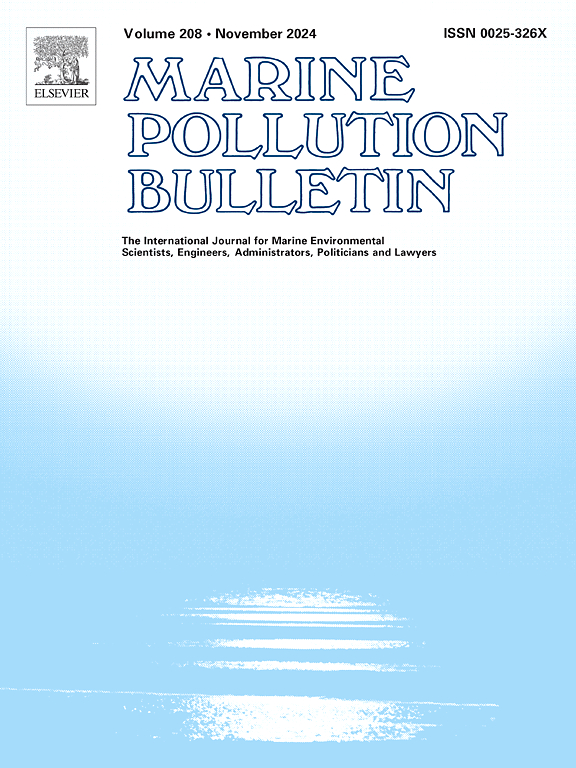Decoding phytoplankton quality in the waterways of the Sundarbans mangrove forest of Bangladesh
IF 5.3
3区 环境科学与生态学
Q1 ENVIRONMENTAL SCIENCES
引用次数: 0
Abstract
Phytoplankton, as primary producers and bioindicators, are vital for assessing aquatic ecosystem health. This study developed a Phytoplankton Quality Index (PQI) to evaluate the ecological health of Bangladesh's Sundarbans estuarine zones, using data from 24 stations across the Pashur River and estuaries in Bagerhat, Khulna, and Satkhira regions during the winter of 2021. Thirty-two variables were incorporated into a comprehensive multivariate and index-based framework, including ten heavy metals, eight phytoplankton indices, eight physicochemical, and four nutrient parameters. Diatoms dominated the phytoplankton community (93.38 %), followed by Dinoflagellates, Chlorophyta, and Charophyta together accompanying high abundance, richness and diversity in estuarine regions and high dominance in upstream regions with varying level of evenness throughout the study area. Moderate pollution was indicated by the Heavy Metal Evaluation Index (HEI = 6.24) in Satkhira and Nemerow's Pollution Index (NPI = 1.65) in Bagerhat. Normality (P > 0.05) and multicollinearity tests (Variance Inflation Factor < 10) finalized fifteen variables for Redundancy Analysis (RDA) and Canonical Correspondence Analysis (CCA), which identified temperature (23.85 ± 1.36 °C), pH (8.04 ± 0.08), nitrate (0.612 ± 0.15 ppm), HEI (5.14 ± 1.48), and ORP (285.11 ± 34.86 miliVolts) as key drivers for Diatoms, while ammonia (0.203 ± 0.105 ppm) and phosphate (0.096 ± 0.05 ppm) favored Chlorophytes and Charophytes. Further PQI was calculated using Principal Component Analysis (PCA) integrating the varimax method ensuring Measure of Sampling Adequecy (MSA > 0.5) for all variables. Results revealed significant spatial variability in phytoplankton quality with poor PQI in the upstream (20 %) and downstream (18 %) sections of the Pashur River driven by metal pollution and nutrient imbalances. Estuarine zones showed good quality (76 %) with localized poor-quality areas were linked to pollution and restricted water circulation. The study introduces a novel framework to identify PQI integrating multiple ecological metrics to assess the health of mangrove estuarine ecosystems. This tool is essential for monitoring ecosystem conditions, detecting pollution hotspots, and supporting sustainable management strategies globally.
求助全文
约1分钟内获得全文
求助全文
来源期刊

Marine pollution bulletin
环境科学-海洋与淡水生物学
CiteScore
10.20
自引率
15.50%
发文量
1077
审稿时长
68 days
期刊介绍:
Marine Pollution Bulletin is concerned with the rational use of maritime and marine resources in estuaries, the seas and oceans, as well as with documenting marine pollution and introducing new forms of measurement and analysis. A wide range of topics are discussed as news, comment, reviews and research reports, not only on effluent disposal and pollution control, but also on the management, economic aspects and protection of the marine environment in general.
 求助内容:
求助内容: 应助结果提醒方式:
应助结果提醒方式:


